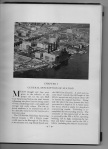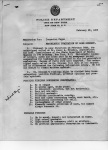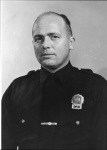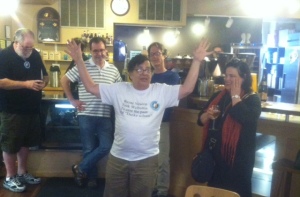PASTEURIZED: “The Pasture” by Robert Frost, Revised.
December 9, 2020 § 2 Comments

I’m going out to score a pack of masks;
I’ll only stop to sanitize my hands
(And steer far clear of anyone who stands
Nearby); Hey you! Step Back! Stay Away!
I’m going out to teach the little calves
that cling to mother: “You’re so young
now hide your face, restrict your lungs
Or else.” Hey you! Step Back! Stay Away!
The Corona of Shame
July 15, 2020 § Leave a comment
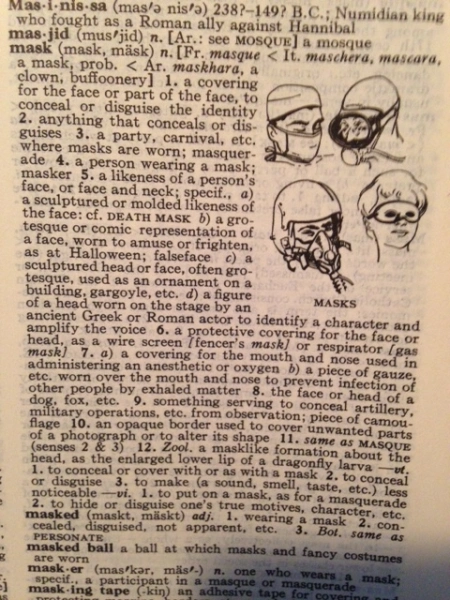
Webster’s New World
Refusing to wear a mask outside,
And, flouting the admonitions of my peers,
I contracted Coronavirus, died.
I held those filthy printed bills inside
my dirty grasping human hands; didn’t care.
And worse, I refused to wear a mask outside.
I kissed the open air, laughed, danced and tried
to sing with homeless people on the thoroughfare,
But, I contracted Coronavirus, died.
Shunned by friends and mocked as if I’d lied,
I walked with slow deliberation, sowing terror,
Refusing to wear a mask outside.
I, alone with cable news and papers, cried,
Renouncing Satan, my grievous sinful error,
But, I contracted Coronavirus, died.
Man alive, I’d spread the message far and wide,
“Lock down the Great Unwashed, and keep them there!”
Yes, I refused to wear a mask outside,
Contracted Coronavirus, died.
Script for Venus
June 8, 2020 § Leave a comment

Photo by Bruce Joshua Miller
We both liked my lips beside your ear;
In various spheres of influence, my tongue,
sans calculation, dire contemplation of rebuke
or viral pathogenic power.
Cowering in place I reach for artificial buds,
Nothing like flowers, hearty bulbs, or
sap of maples in a mulchy forest bed;
But, weak in volume, duds.
This world wasn’t of our making, stop.
Wuhan, we know your residents are not
to blame, the wet markets not wild, but tame;
One day we’ll have the truth, and maybe
room for the resumption of pleasure all over again.
MINNEAPOLIS, 2020
May 28, 2020 § Leave a comment
The eight billion that went missing in Iraq
Might be hidden in a bank in Bern, Belize
Ras Al Khaimah; decked with ribbon
Like uniformed dead soldiers from Cairo,
Cincinnati, Milwaukee, Davenport.
We can’t find the loot, that money’s
gone, but what keeps turning up?
Abu Ghraib.
Abu Ghraib Chicago, St. Louis, New York City,
Minneapolis,
graves.
THE TOADS NOT TAKEN
May 23, 2020 § 1 Comment
Two toads emerged from a blackened wood,
And sorry I could not zigzag, following both
And be one follower, long I stood
And eyeballed one as far as I could
Pokémon-like, to wherever it hid;
Then chased t’other, although not as fair,
But, having perhaps the better skin,
Because more bumpy and wanted wear;
Though as for that, the toxins there
Had worn them really about the same.
And both that morning equally hopped
On leaves no mites had eaten black.
Oh, I’ll note them both for another game!
Yet knowing how way leads on to way,
I doubt if I should ever go back.
I shall be telling this to some worm
Somewhere ages and ages hence:
Two toads emerged from a blackened wood, and I—
I chased the second that went by,
And that has made no difference at all.
As Happiness Becomes Extinct, Americans Lose Faith in the Plague Dodo
April 29, 2020 § Leave a comment

A Winter Moon, Spring Books
December 26, 2019 § Leave a comment
“It may well be both tautologous and contradictory.”
–Jake, Moonlight by Harold Pinter* (verified purchase at Seminary Coop Bookstore*)

The universe of books is larger than it used to be, but the milieu of books, smaller. The twin tyrannies of Database and Internet ensure that books can be easily purchased at a low price via computer, which means any single bookstore carries a reduced inventory of titles, with fewer people browsing. Free ebooks from websites like Guttenberg.org, open source books and self-published ebooks are potentially a great boon and joy to readers, to scholars, archivists, and librarians, but…
these technological innovations have severely restricted the social life of books. The parents–whosoever they might be–have grounded their children.
Once upon a time books from many independent and small publishers (The Crossing Press and South End Press come to mind) might be found on the shelves of the most comprehensive bookstores (those selling new books) next to books published by the New York giants. Some bookstores carried small presses, and some did not, but the large number of bookstores made it possible for readers to enter both unconventional and mainstream stores within the same city or town.
I don’t mean to say we don’t have bookstores that continue the best–and most inclusive–traditions of the past, because we do. As a peddler of university press books, I am living proof that many such bookstores are thriving. And, as new stores continue to open, some of the new owners are making it clear they understand the value of university presses: a hopeful note for the new year.
In fostering the social life of books I must applaud the continuing commitment of university presses and small independent houses to books that otherwise would never see the sun, the moon, or the light of a lamp. Some of these books are not unlike the kind of nonfiction that the alternative presses put out 40 or 50 years ago. In fact, some books from that era are being reprinted by, guess who? Those stuffy, old-school university presses.
University presses offer an open door to scholars, publishing peer-reviewed scholarship and provoking dialogue, discussion, debate, within and among the disciplines, but these presses also keep in mind educated general readers (even the common reader) who are invited to explore a vast variety of subjects.
If publishers, authors, journalists, teachers, professors, librarians, foundations, legislators, give up the ghost, pronouncing the death of this unquantifiable manifestation of human curiosity and impulse toward knowledge and pleasure gained through the reading of books-the general or common reader-then we have ceded our culture and educational intentions to social media videos, AI mediation and the focused-grouped, corporate entertainment marketplace.
Sugar donuts washed down with grape soda, anyone?
In the generous spirit of the winter holidays, I offer you some previews of new titles for spring 2020, the copy cribbed largely from seasonal catalogs:
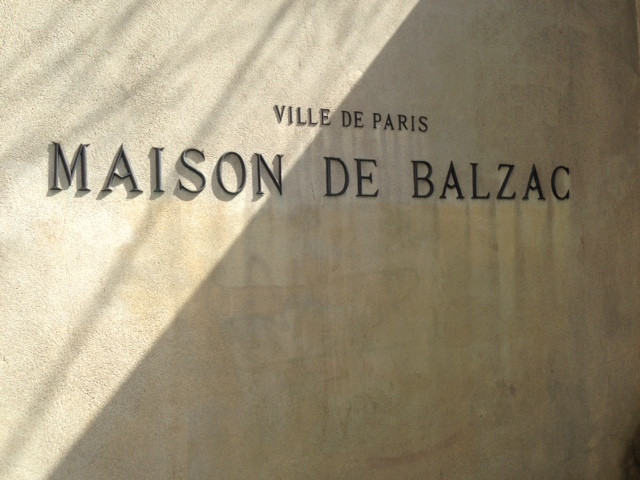

The wall outside the museum entrance, and manuscripts on display at the Maison de Balzac in Paris, photos by Bruce Joshua Miller, April 2018.
In eight days, Stefan Zweig says, Balzac came up with the idea for Lost Illusions (Illusions Perdues), and wrote the entire first part. “I exerted all my strength and wrote for fifteen hours a day,” Balzac said, “I rose with the sun and worked until it was time for lunch, without taking anything except black coffee.”
“Balzac” says Zweig, “unmasked the whole system by which public opinion was organized, the world of literature and the theater with its internal decay, where men hung together yet would stab one another in the back when opportunity offered. And though he only intended to present a segment of the Parisian society of his time, it developed into a complete picture of the age and one that is valid for all ages…”
Balzac could not have written La Comédie Humaine without the aid of coffee, and here is his description of its virtues for a writer: “Coffee glides down into one’s stomach and sets everything in motion. One’s ideas advance in column of route like battalions of the Grande Armée. Memories come up at the double bearing the standards which are to lead the troops in battle. The light cavalry deploys at the gallop.The artillery of logic thunders along with its supply of wagons and shells. Brilliant notions join in the combat as sharpshooters. The characters don their costumes, the paper is covered with ink, the battle has begun and ends with an outpouring of black fluid like a real battlefield enveloped in swathes of black smoke from the expended gunpowder.”
Lost Illusions by Honore de Balzac, translated by Raymond N. MacKenzie, $19.95, paperback with flaps, 624 pages, ISBN 9781517905439 APRIL. UNIVERSITY OF MINNESOTA PRESS.
This new, annotated translation of Lost Illusions is a major landmark in the history of Balzac’s fiction in English. Minnesota will also publish Prof. MacKenzie’s translation of the sequel, The Splendors and Miseries of Courtesans under the title, Lost Souls. These new editions will ultimately help increase the readership of La Comédie Humaine, Balzac’s brilliant life’s work. I am looking forward to Professor MacKenzie’s translations, and I have no doubt they will be wonderful, with cogent notes to guide the contemporary reader.
I May or May Not Love you, poems by David M. Perkins, illustrated by Jay Miller, $19.95, paperback with flaps, 136 pages, ISBN 9781948509152 April. Ice Cube Press.
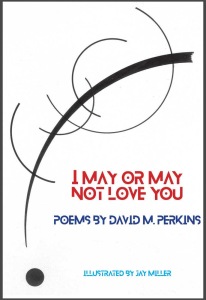
I first met David when he worked in marketing at the University of Illinois Press. We had many sales meetings at the American Booksellers Association convention (now BEA) or at various places in NYC. I noticed David always spent an inordinate amount of time on books of poetry or about poets. He was very enthusiastic and articulate. Fast forward to a year or two ago, when, as a newly minted Facebook friend, I read a poem he posted, “Disconcerting Things.” I read it quickly (Anyone who frequents social media sites sees all sorts of things, many creative efforts. One doesn’t expect much). I paused. Did I just read what I thought I read?
I read it again, more carefully. My heart stopped. This poem was short, deftly composed, without a single unnecessary word and yet unassuming in a way that catches your casual attention as if you were reading a brief, breezy letter from a friend (I would soon discover that this is a Perkins attribute and asset), and absorbs it, seizing it. The poem builds slowly to a crescendo, as if raising its voice and then leaves you suddenly, with the powerful jangle of its slant rhyme.
I wondered, “did Perkins write this? Is he posting the work of a poet he admires?”

David Perkins
It soon became clear to me that, yes, David is a poet, and was the author of this, and many other poems. He posted more of his work. Many of his poems have been published in magazines, but this is his first book. I am so happy to broadcast that it will be published in April, 2020. Steve Semken of Ice Cube Press had the vision to snap up this shining gem from the sand.
I am hesitant to post a poem from the collection, because I don’t believe in being a spoiler or violating the integrity of this collection, and because it is the poetry’s cumulative power that becomes evident as you read. But, here are the last three stanzas of The Yellow Wood, a teaser, to welcome you, dear reader, into David’s world:
I want you to step easily into me and feel comfortable
and calm, though storms may be going on, and
touch the reachable in ways your mind will recount
in perfect detail days and ages later. I do not want
you to be afraid or puzzled or feel as though you
may have been fooled. I want you to separate
yourself from your skin and step out into the air
and realize that there is someone there to catch
you. I want to travel with you as far as you will go.
If you don’t believe me when I tell you David’s work is beyond exceptional, by turns funny, astonishing, clever, sad–I’d put his work up against that of any poet writing today–then maybe you’ll believe Rigoberto González or Jim Barnes:
“Endearingly reflective, the poems in I MAY OR MAY NOT LOVE YOU arrive quietly but keep us alert to wonder. What a blessing it is to journey with a writer whose observations about life, love, and loss sparkle with clarity and wisdom.”~ Rigoberto González, author of 20 books, including THE BOOK OF RUIN and SO OFTEN THE PITCHER GOES TO WATER BEFORE IT BREAKS
“Perkins poems are not ‘of the moment,’ not the rants nor the whimpers of the politically correct crowd we hear so damned much from these days. You will find no victim here, no poet with a cause. I MAY OR MAY NOT LOVE YOU teems with the language of living and loving that we can hold close without the dread of betrayal. His lines make the mundane significant, and we are drawn into his work as if by a warm magic that we can trust. His is a modern Romanticism chocked full of allusion, metaphor, and the full force of narrative that takes harsh realities as they come but at the same time says, as Lot’s wife in “Distaff” does, ‘I’m not going anywhere with you anymore.’ I applaud these poems’ capacity for love.”~ Jim Barnes, author of PARIS, ON A WING OF THE SUN and SUNDOWN EXPLAINS NOTHING: NEW AND SELECTED POEMS
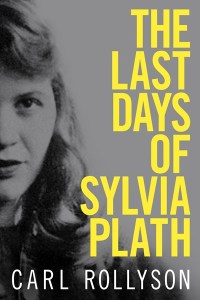
The Last Days of Sylvia Plath by Carl Rollyson $25.00 Hardcover 256 pages 24 b&w illustrations ISBN 9781496821225 March University Press of Mississippi
In her last days, Sylvia Plath struggled to break out from the control of the towering figure of her husband Ted Hughes. In the antique mythology of his retinue, she had become the gorgon threatening to bring down the House of Hughes. Drawing on recently available court records, archives, and interviews, and reevaluating the memoirs of the formidable Hughes contingent who treated Plath as a female hysteric, Carl Rollyson rehabilitates the image of a woman too often viewed solely within the confines of what Hughes and his collaborators wanted to be written.
Rollyson is the first biographer to gain access to the papers of Ruth Tiffany Barnhouse at Smith College, a key figure in the poet’s final days. Barnhouse was a therapist who may have been the only person to whom Plath believed she could reveal her whole self. Barnhouse went beyond the protocols of her profession, serving more as Plath’s ally, seeking a way out of the imprisoning charisma of Ted Hughes and friends he counted on to support a regime of antipathy against her.
The Last Days of Sylvia Plath focuses on the train of events that plagued Plath’s last seven months when she tried to recover her own life in the midst of Hughes’s alternating threats and reassurances. In a siege-like atmosphere a tormented Plath continued to write, reach out to friends, and care for her two children. Why Barnhouse seemed, in Hughes’s malign view, his wife’s undoing, and how biographers, Hughes, and his cohort parsed the events that led to the poet’s death, form the charged and contentious story this book has to tell.

H.W. Brands
Haiku History: The American Saga three lines at a Time by H.W. Brands, $21.95, hardcover, 148 pages, ISBN 9781477320327 MAY. UNIVERSITY OF TEXAS PRESS.
H.W. Brands is a distinguished historian and the author many books, including, Founding Finance: How Debt. Speculation, Foreclosures, Protests and Crackdowns Made Us a Nation (University of Texas Press), Traitor to His Class, The Privileged Life and Radical Presidency of Franklin Delano Roosevelt (Anchor), and many others. Here is what the University of Texas Press spring catalog says about Haiku History:
“For the past nine years, acclaimed historian H. W. Brands has been tweeting the history of the United States. But this has been no ordinary version of the American tale. Instead, Brands gives his 5,000-plus followers a regular dose of history and poetry combined: his tweets are in the form of haikus. ‘Shivers and specters / Flit over hearts in Salem / And so nineteen hang’ describes the Salem Witch Trials, and ‘In angry war paint / Men board the British tea ships / And toss the cargo’ depicts the Boston Tea Party.
‘Then an anarchist / Makes one of the war heroes / The next president’ recalls the assassination of William McKinley and the ascension of Teddy Roosevelt to the presidency, while ‘Second invasion: / Iraq, where Saddam is still / In troubling control’ returns us to the invasion of Iraq in 2003. As he travels from the thirteen colonies to the 2016 election, Brands brings to life the wars, economic crises, social policies, and other events that have shaped our nation. And here are a few more:
Walking from Asia
A hunter, a tribe, a clan
Into a new world.
First arrivals, c. 15,000 BC
The Norsemen sail west
For fish, grapes, a plot of ground
Then sail east again.
Newfoundland, c. 1000 AD
The white ships appear
The bearded ones come ashore
Who the hell are they?
Columbus, 1492
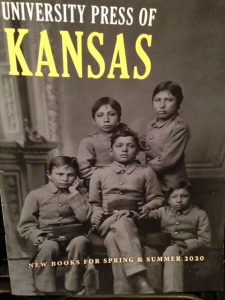
TWO BOOKS FROM UNIVERSITY PRESS OF KANSAS:
Education for Extinction, American Indians and the Boarding School Experience, 1875-1928, Second Edition, Revised and Expanded by David Wallace Adams $19.95 paperback 472 pages ISBN 9780700629602 June.
“This is, quite simply, a wonderful book. In lively prose, Adams tells the poignant story of the relentless war against American Indian children. It is a tale about policy makers who sought to use boarding schools as an instrument for transforming Indian youth to ‘American’ ways of thinking, doing, and living. Adams demonstrates convincingly that Native American students were anything but passive recipients of the ‘curriculum of civilization.’”—Choice
“A story worth reading and remembering, one that reveals the use of education as a weapon of war, a method of domination, a strong lesson in the potential for education to become part of a political and cultural arsenal.”—American Journal of Education
“Remarkable for its synthesis of detail, its scope, and especially its sophisticated analysis and sound reasoning about the multiple conflicting motivations of both whites and Indians.”—American Historical Review
“A poignant and heartbreaking book that chronicles the infamous history of the U.S. government’s efforts to indoctrinate, :, and ‘Americanize’ Native peoples through the use of boarding schools. . . . This is a must-read book for all educators, especially for those who wish to work with students of color. As this book powerfully reminds us, education is an encounter, not a discovery.”—Harvard Educational Review
“Adams’s contribution to the literature in this field will be valued by students of the Native American experience as a comprehensive source that reveals many of the complexities and ambiguities of the boarding school era.”—History of Education Quarterly
“Well researched, well conceptualized, and extremely well written.”—Western Historical Quarterly
“Education for Extinction delivers on the promise of its title. This is a thorough and thoughtful study of the federal government’s Indian education program that was explicitly aimed at extinguishing a culture. That it failed testifies to a deficient understanding of cultural dynamics as well as to the durability of Indian culture. An important contribution to the literature of Indian-white relations.”—Robert M. Utley, author of The Lance and the Shield: The Life and Times of Sitting Bull
“Adams has achieved something remarkable here: he offers a great deal of information on an important and difficult historical topic while never losing sight of its human dimension. Persuasive and moving, his book is full of good stories that should appeal to the general public.”—Brian Dippie, author of The Vanishing American: White Attitudes and U.S. Indian Policy
“An outstanding contribution to the field of Indian history and the history of Indian education.”—Robert Trennert, author of The Phoenix Indian School: Forced Assimilation in Arizona, 1891–1988
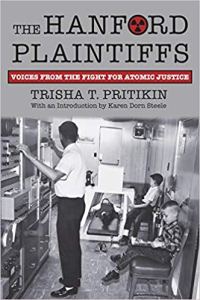 The Hanford Plaintiffs, voices from fight for atomic justice by Trisha T. Pritikin, with an introduction by Karen Dorn Steele $28.95 Paperback 360 pages 53 photographs ISBN 9780700629046 March.
The Hanford Plaintiffs, voices from fight for atomic justice by Trisha T. Pritikin, with an introduction by Karen Dorn Steele $28.95 Paperback 360 pages 53 photographs ISBN 9780700629046 March.
Recording the history of the use, testing, and manufacture of nuclear weaponry and the toll on humanity requires the work of many hands, publishers large and small. I remember many books on these issues such as The Atomic West, edited by Bruce w. Hevly and John M. Findlay; The Baneberry Disaster by Larry C. Johns ; Atomic Spaces by Peter Bacon Hales; Nuclear Culture by Paul Loeb; and, further afield, Tony Price: Atomic Art by James Rutherford.
In the summer of 1991, the Ohio State University Library mounted an exhibit of books, documents ( such as the loyalty oath signed by Ohio Sate faculty who worked on the Project) and other artifacts about the Manhattan Project. The exhibit was colorful and eye-opening. It was put together by an archivist named Rai Goerler. The following year I wrote to the library asking if I might obtain a copy of the bibliography . On May 5,1992 Bernard Bayer, head of the physics library at Smith Laboratory, sent me the 8-page bibliography, listing 79 items, most of them books, with a few films thrown in. Here is a PDF with more information about that display. The bibliography (not available online that I know of) includes books from commercial presses, university presses, independent presses and historical societies.
But, leave it to university presses to publish pathbreaking studies that get to the heart of a subject. In 1998 Brookings Institution Press published the mother of all books about the economic cost to the United States of the nuclear arms race: Atomic Audit, The Costs, and the Consequences of U.S. Nuclear Weapons since 1940, edited by Stephen I. Schwartz. This nearly 700-page books documents that atomic weapons (as of 1998) had cost us 5 trillion dollars. If we had in place a single-payer, comprehensive national health care system from 1940-1998, I wonder how much that might have cost…and how many lives that might have saved? I hope Brookings has the wherewithal to publish a new edition.
So, thanks to Brookings, we have a good idea of the astonishing economic toll taken by the U.S. manufacture of weapons of mass destruction, but the price paid in human suffering is more difficult to quantify.
The Hanford nuclear weapons facility in the state of Washington operated for more than 40 years, beginning in 1944, secretly blanketing much of the Pacific Northwest with low-dose ionizing radiation, the byproduct of plutonium production. For those who lived in the vicinity, many of them families of Hanford workers, the consequences soon became apparent as rates of illness and death steadily climbed—despite repeated assurances from the Atomic Energy Commission that the facility posed no threat.
Mike Kehoe, Marketing Director of University Press of Kansas, tells me: The Hanford “downwinders’” personal injury litigation begun in 1993 by more than 4000 plaintiffs who have filed personal injury suits against the prime contractors who operated Hanford during years of offsite radiation releases. These were DuPont, GE, and Rockwell. It is still grinding slowly along after two decades, featuring a multi-million dollar contractors’ defense team funded by taxpayer dollars against the claims of ill and often-impoverished plaintiffs who worked at and lived in the region of the Hanford Nuclear Reservation and who continue their seemingly-endless wait for settlement or their day in court.
Trisha T. Pritikin, who has battled a lifetime of debilitating illness to become a lawyer and advocate for her fellow downwinders, tells the devastating story of those who were harmed in Hanford’s wake and, seeking answers and justice, were subjected to yet more suffering.
At the center of The Hanford Plaintiffs are the oral histories of twenty-four people who joined In re Hanford Nuclear Reservation Litigation, the class-action suit that sought recognition of, and recompense for, the grievous injury knowingly caused by Hanford. Radioactive contamination of American communities was not uncommon during the wartime Manhattan Project, nor during the Cold War nuclear buildup that followed. Pritikin interweaves the stories of people poisoned by Hanford with a parallel account of civilians downwind of the Nevada atomic test site, who suffer from identical radiogenic diseases. The endorsements below make clear the value of this book:
“The discussion of health effects from exposure to radioactive contaminants tends to focus on acute effects–cancers and death tolls. Pritikin shows in heart-breaking detail the stockpile of health problems from exposure to radioactivity and how painfully these chronic health problems dismantle lives. A passionate and carefully researched account of the failed fight for atomic justice.”–Kate Brown, author of Plutopia: Nuclear Families, Atomic Cities, and the Great Soviet and American Plutonium Disasters and Manual for Survival: An Environmental History of the Chernobyl Disaster
“Given the current political climate–North Korea’s nuclear threat, the current US administration’s provocation of North Korea, the potential unraveling of Iran’s nuclear deal, and the ongoing tension between India and Pakistan–Trisha Pritikin’s The Hanford Plaintiffs is a timely addition to literature that has addressed the health harm caused by radiation exposure downwind of weapons’ production and testing sites as well as from the use of nuclear weapons in warfare; from uranium mining, milling, or transport; from nuclear power plant accidents; and from leaking nuclear waste. Pritikin’s work stands out, not only in its description of the plight of the people–called downwinders–in and around the Hanford site but also in its disclosure of the callous disregard of the US government for the innocent citizens it was supposed to protect.”–Yuki Miyamoto, PhD, associate professor of religious studies, DePaul University, and author of Beyond the Mushroom Cloud
“The Hanford Plaintiffs is an urgent book for our times. We think we know about Hiroshima and Nagasaki, on the one hand, and Three Mile Island, Chernobyl, and Fukushima on the other. We might imagine that these places stand for events safely consigned to the past or that the production of nuclear weapons and nuclear power are separate affairs. Now we are encountering, once again, cavalier talk about the use of nuclear weapons. The Hanford Plaintiffs opens our eyes to the reality of how the atomic age has played long-term, continuing havoc with whole communities, the environment, and democratic principles in the United States and throughout the world by presenting the life stories of the downwinders of the Hanford Nuclear Reservation, where the plutonium for the Nagasaki bomb was produced. Pritikin lays out her material methodically, providing the scientific, medical, legal, and historical components important to readers’ full understanding.”– Norma Field, PhD, professor emerita, University of Chicago, East Asian Languages and Civilizations, and author of In the Realm of a Dying Emperor: Japan at Century’s End
“The Hanford Plaintiffs is an extraordinary and unique exposé of the human results of deliberate releases of huge quantities of radioactive isotopes from the Hanford reactors and nuclear complex over many years of operation.”–Helen Caldicott, MD
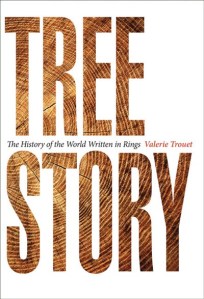
Tree Story, the history of the world written in rings by Valerie Trouet $27.00 hardcover 256 pages ISBN 9781421437774 April The Johns Hopkins University Press.
Blending popular science, travelogue, and cultural history, Tree Story highlights exciting findings of tree-ring research, including the locations of drowned pirate treasure, successful strategies for surviving California wildfire, the secret to Genghis Khan’s victories, the connection between Egyptian pharaohs and volcanoes, and even the role of olives in the fall of Rome. These fascinating tales are deftly woven together to show us how dendrochronology sheds light on global climate dynamics and reveals the clear links between humans and our leafy neighbors. Trouet captivates us with her dedication to the tangible appeal of studying trees, a discipline that has taken her to the most austere and beautiful landscapes around the globe and has enabled scientists to solve long-pondered mysteries of the earth and her human inhabitants.
Her stories about her travels are highly entertaining and informative.
Sal McLemore, a fellow publishers’ representative, read the galley and was so impressed he persuaded the publisher to raise this book’s profile, which Johns Hopkins did. I’ve included the table of contents, so you can see how charming the chapter titles are, and get a sense of the variety of her essays.
Prologue
Chapter 1. Trees in the Desert
Chapter 2. I Count the Rings Down in Africa
Chapter 3. Adonis, Methusaleh, and Prometheus
Chapter 4. And the Tree Was Happy
Chapter 5. The Messiah, the Plague, and Shipwrecks under the City
Chapter 6. The Hockey Stick Poster Child
Chapter 7. Wind of Change
Chapter 8. Winter Is Coming
Chapter 9. Three Tree-Ring Scientists Walk into a Bar
Chapter 10. Ghosts, Orphans, and Extraterrestrials
Chapter 11. Disintegration, or The Fall of Rome
Chapter 12. It’s the End of the World as We Know It
Chapter 13. Once upon a Time in the West
Chapter 14. Will the Wind Ever Remember?
Chapter 15. After the Gold Rush
Chapter 16. The Forest for the Trees
Playlist
List of Tree Species
Recommended Reading
Glossary
Bibliography
Index

-Robert Hass
-Michael Cunningham
-David S. Reynolds

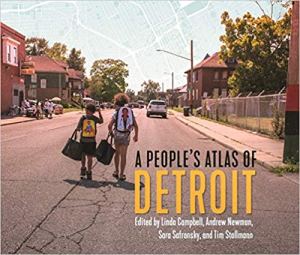
A People’s Atlas of Detroit, Edited by Linda Campbell, Andrew Newman, Sara Safransky, and Tim Stallmann $34.99 paperback 352 pages 8 x 10 52 photographs, 52 maps, 6 charts ISBN 9780814342978 February Wayne State University Press.
Detroit is widely known as the Motor City, home to the auto industry, but it has also given rise to some of the world’s most important urban social movements. This interdisciplinary volume features contributions from over fifty figures who have participated in movement-building efforts in Detroit, including activists, farmers, students, educators, scholars, not-for-profit and city government workers, and members of neighborhood block clubs.
The book grew out of a community-based participatory project called Uniting Detroiters that sought to use collective research to strengthen the organizing infrastructure of the city’s long-vibrant grassroots sector and reassert residents’ roles as active participants in the development process. The book aims to both chart and help build movements for social justice. A People’s Atlas of Detroit argues that it is only by confronting racial injustice and capitalism head-on that communities can overcome the depths of economic and ecological crises afflicting cities today.
Contributors: Gabriela Alcazar, Rhonda Anderson, Kaisha Brezina, Lila Cabbil Michelle Cassidy, William Copeland, Dessa Cosma, Patrick Crouch, Kezia Curtis, Wayne Curtis, Michael Darroch, Dianne Feeley, Tanesha Flowers, Lee Gaddies, Isaac Ginsberg Miller, Janice Hale, Aaron Handelsman, Imani Harris, Joselyn Fitzpatrick Harris, Jeanine Hatcher, Elena Herrada, Charity Hicks, Alex Hill, Gloria House, Shea Howell, Robert Johnson, Sarah Khan, Mark Luborksy, Jenny Lee, Kate Levy Emily Macgillivray, Carmen Malis King, Jeanette Marble, Vincent Martin, Michelle Martinez, Cecily McClellan, Curtis McGuire Shanna Merola, Tiya Miles, Gregg Newsom, Alexandra Passarelli, James Perkinson, Tawana “Honeycomb” Petty, Jessi Quizar, Josiah Rector, Lee Rodney, Paul Rodriguez, Zak Rosen, Lauren Rosenthal, Rev. Joan Ross, Andrea Sankar, Betty Scruse, Amy Senese, Yusef “Bunchy” Shakur, Syri Simpson, Brother Jerry Smith, Lottie Spady, Soh Suzuki, Amelia Wieske, Deborah Williamson, Malik Yakini

I Never Left Home : Poet, Feminist, Revolutionary by Margaret Randall $29.95 hardcover 336 pages ISBN 9781478006183 March Duke University Press
Margaret Randall wrote this “memoir of time and place” to share the astonishing story of her life, describing the milieu that shaped her artistic and political sensibility, and the momentous scenes she witnessed as an activist in Mexico, Cuba, and the “volcano” of Nicaragua.
“Volcanoes came to symbolize Central America for me,” she tells us, “a dramatic sometimes violent string of cones running the length of that narrow strip of land linking North and South America.”
Writing about Nicaragua was the most difficult for her: “…One of the first things I did when I got to Nicaragua [in 1980] was help dig up and move the bodies of combatants hastily buried without coffins during the war’s last months and transfer them to proper graves.”
This wide-ranging memoir began as an essay about the time she spent (1958-1961) “among the abstract expressionist painters in New York City,” but, with the recovery of a long-lost manuscript she had written about her life, the full scope of the current work began to come into view. A poet, essayist, photographer, oral historian and social activist, Randall has published more than 150 books.
Older readers will recall that when she returned to the United States in 1984 after living in Latin America for twenty-three years, the Ronald Reagan administration’s Immigration and Naturalization Service ordered her to be deported for her “subversive writing.” Over the next five years, and with the support of writers, entertainers, and ordinary people across the country, Randall fought to regain her citizenship, which she won in court in 1989.
In addition to other dramatic events she recounts–for example, having to flee Mexico when the Mexican government cracked down on all those who took part in the 1968 student movement– she does not shy away from personal revelations in trying to make sense of her remarkable life. After returning from Latin America at the age of fifty she sought therapy for a phobia that turned out to be caused by an early trauma: her maternal grandfather had sexually abused her when she was an infant. Those who follow her writing career will know that she published a book about it, This Is About Incest.
She also talks about the Jewish self-hatred suffered by her family and how she has coped with the complex emotions of that legacy.
While I Never Left Home is Randall’s story, it is also the story of the communities of artists, writers, and radicals she felt at home with. Randall brings to life scores of creative and courageous people trying to create a more just world. She also weaves political and social analyses and poetry into the narrative.
“Every Margaret Randall book or poem is a jewel to be savored, but this text may be the best yet. Beautifully written, it is Randall’s first comprehensive memoir. With her moves through the 1950s’ expressionist art world in New York through the 1960s Mexican literary scene, the Cuban Revolution looms large and beckons Randall to participate, which eventually brings the scrutiny of Uncle Sam attempting to strip her of her citizenship. Throughout, Randall’s early and deep feminism is a guiding light.”
-Roxanne Dunbar-Ortiz, author of / An Indigenous Peoples’ History of the United States
-Garrett Caples, coeditor of / The Collected Poems of Philip Lamantia
-Achy Obejas, author of / The Tower of the Antilles
Harry Haft : Survivor of Auschwitz, Challenger of Rocky Marciano by Alan Scott Haft $14.95 paperback 208 pages ISBN 9780815611196 April Syracuse University Press
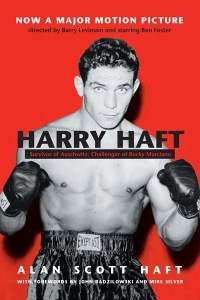
Alan Scott Haft provides the first-hand testimony of his father, Harry Haft, a holocaust victim with a singular story of endurance, desperation, and unrequited love. Harry Haft was a sixteen-year-old Polish Jew when he entered a concentration camp in 1944. Forced to fight other Jews in bare-knuckle bouts for the perverse entertainment of SS officers, Harry quickly learned that his own survival depended on his ability to fight and win. Haft details the inhumanity of the “sport” in which he must perform in brutal contests for the officers. Ultimately escaping the camp, Haft’s experience left him an embittered and pugnacious young man.
Determined to find freedom, Haft traveled to America and began a career as a professional boxer, quickly finding success using his sharp instincts and fierce confidence. In a historic battle, Haft fights in a match with Rocky Marciano, the future undefeated heavyweight champion of the world. Haft’s boxing career takes him into the world of such boxing legends as Rocky Graziano, Roland La Starza, and Artie Levine, and he reveals new details about the rampant corruption at all levels of the sport.
In sharp contrast to Elie Wiesel’s scholarly, pious protagonist in Night, Harry Haft is an embattled survivor, challenging the reader’s capacity to understand suffering and find compassion for an antihero whose will to survive threatens his own humanity. Haft’s account, at once dispassionate and deeply absorbing, is an extraordinary story and an invaluable contribution to Holocaust literature.
This new paperback edition coincides with the soon-to-be-released feature film.
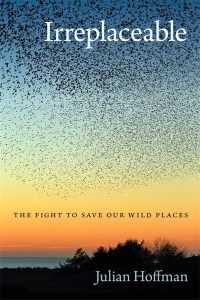
Irreplaceable : The Fight to Save Our Wild Places by Julian Hoffman $24.95 paperback 416 pages ISBN 9780820357683 March University of Georgia Press.


Coming Out, Moving Forward, the second volume in R. Richard Wagner’s groundbreaking work on gay history in Wisconsin, the first volume was We’ve Been Here All Along. This new book outlines the challenges that LGBT Wisconsinites faced in their efforts to right past oppressions and secure equality in the post-Stonewall period between 1969 and 2000. During this era, Wisconsin made history as the first state to enact a gay rights law prohibiting discrimination in employment, housing, and public accommodations on the basis of sexual orientation. It also became the first state to elect three openly gay/lesbian persons to Congress.
R. Richard Wagner draws on historical research and materials from his extensive personal archive to not only chronicle an important movement, but also to tell the stories of the state’s LGBT pioneers—from legislators and elected officials to activists, businesspeople, and everyday citizens. Coming Out, Moving Forward documents the rich history of Wisconsin’s LGBT individuals and communities as they pushed back against injustice and found ways to live openly and proudly as themselves.

Ernest Hemingway casts a long shadow in literature—reaching beyond his status as a giant of 20th-century fiction and a Nobel Prize winner—extending even into comic books. Appearing variously with Superman, Mickey Mouse, Captain Marvel, and Cerebus, he has even battled fascists alongside Wolverine in Spain and teamed up with Shade to battle adversaries in the Area of Madness.
Robert K. Elder’s research into Hemingway’s comic presence demonstrates the truly international reach of Hemingway as a pop culture icon. In more than 120 appearances across multiple languages, Hemingway is often portrayed as the hypermasculine legend: bearded, boozed up, and ready to throw a punch. But just as often, comic book writers see past the bravado to the sensitive artist looking for validation. Hemingway’s role in these comics ranges from the divine to the ridiculous, as his image is recorded, distorted, lampooned, and whittled down to its essential parts.
As Elder notes, comic book creators and Hemingway share a natural kinship. The comic book page demands an economy of words, much like Hemingway’s less-is-more “iceberg theory,” only in graphic form. In addition, he turned out to be the perfect avatar for comic book artists wanting to tell history-rich stories, as he experienced beautiful places during the most chaotic times: Paris in the 1920s, Spain during the Spanish Civil War, Cuba on the brink of revolution, France during World War I and during World War II just after the Allies landed in Normandy.

Hemingway in Comics provides a unique lens for considering one of our most influential authors. Not only for the dedicated Hemingway fan, this book will appeal to all those with an appreciation for comics, pop culture, and the absurd.

Loud Fast Words, Soul Asylum Collected Lyrics by Dave Pirner $17.95 paperback 240 pages ISBN 9781681341729 30 B&W photos and illustrations March Minnesota Historical Society Press
The collected lyrics of one of the most beloved alternative rockers of the past 30 years, with insights into the creative process behind the songs.
As the primary songwriter for Soul Asylum, Dave Pirner has penned hundreds of songs over the course of nearly four decades and has helped to shape the alternative-rock world through his artful lyrics and distinctive vocals. With twelve full-length studio albums under their belts, Pirner and Soul Asylum have produced songs that have captured multiple generations of music fans.
The lyrics collected here represent Pirner’s life’s work (to date): nearly 150 songs printed in their full form, annotated by Pirner with his own recollections and reflections on the inspiration behind each song and what they mean to him and his career. Supplemented with photographs and reproductions of his handwritten lyric pages, Loud Fast Words reveals the creative process and the soulful spirit behind one of America’s great songwriters.

The Stringbags by Garth Ennis, P. J. Holden (Drawings by) $29.95 paperback ISBN 9781682475034 May Naval Institute Press.
Nazi Germany, Imperial Japan, and Fascist Italy began World War II with torpedo bombers that could devastate enemy warships and merchantmen at will. Britain’s Royal Navy squadrons went to war equipped with the Fairey Swordfish.
A biplane torpedo bomber in an age of monoplanes, the Swordfish was underpowered and under-gunned; an obsolete museum piece, an embarrassment. Its crews fully expected to be shot from the skies. Instead, they flew the ancient “Stringbag” into legend.
Writer Garth Ennis and artist PJ Holden present the story of the men who crewed the Swordfish: from their triumphs against the Italian Fleet at Taranto and the mighty German battleship Bismarck in the Atlantic, to the deadly challenge of the Channel Dash in the bleak winter waters of their homeland. They lived as they flew, without a second to lose–and the greatest tributes to their courage would come from the enemy who strove to kill them.

Based on the true story of the Royal Navy’s Swordfish crews, The Stringbags is an epic tale of young men facing death in an aircraft almost out of time.
“A reserve crew in a hopelessly outdated biplane attacking the might of a battleship convoy in the early days of World War II. The Stringbags is, like the best well-researched military history, delivered with genuine heart, something Garth Ennis excels at. A gripping underdog tale filled with spectacle and tragedy, featuring career-best art from PJ Holden.” –Rob Williams, author of Judge Dredd and? Unfollow
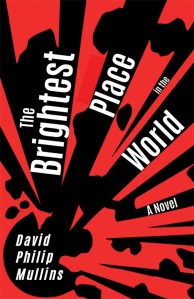
The Brightest Place in the World : A Novel by David Phillip Mullins $24.95 Hardcover 240 pages ISBN 9781948908412 June University of Nevada Press
A deadly explosion at a Las Vegas chemical plant forces an afflicted cast of characters to reevaluate their lives
Inspired by true events, The Brightest Place in the World traces the lives of four characters haunted by an industrial disaster. On an ordinary sunny morning in 2012, a series of explosions level a chemical plant on the outskirts of Las Vegas. The shock waves are felt as far away as Fremont Street. Homes and businesses suffer broken windows and caved-in roofs. Hundreds are injured, and eight employees of the plant are unaccounted for, presumed dead.
One of the missing is maintenance technician Andrew Huntley, a husband and father who is an orbital force in the novel as those who loved him grapple with his loss. Andrew’s best friend, Russell Martin—an anxiety-plagued bartender who calms his nerves with a steady inflow of weed—misses him more than he might a brother. Meanwhile Emma, Russell’s wife—a blackjack dealer at a downtown casino—tries to keep her years-long affair with Andrew hidden. Simon Addison, a manager at the plant who could have saved Andrew’s life, is afflicted by daily remorse, combined with a debilitating knowledge of his own cowardice. And then there’s Maddie, Andrew’s only child, a model high-school student whose response to the tragedy is to experiment with shoplifting and other deviant behavior.
Against the sordid backdrop of Las Vegas—and inspired by the PEPCON disaster of May 4, 1988—this engaging novel is a story of grief and regret, disloyalty and atonement, infatuation and love.
“Incendiary”: Michael Cannell’s Mad Bomber Bungle
June 19, 2017 § 1 Comment

The building in Manhattan where Metesky lived while employed by the United Electric Light and Power Company.
George Peter Mestesky was arrested as “The Mad Bomber” at his home in the working-class Brooklyn section of Waterbury, CT, on January 21, 1957. He had secreted small pipe bombs throughout New York City, in phone booths, train stations, movie theaters, and many Manhattan landmarks, on and off for sixteen years, baffling police with his untraceable homemade components and his angry, cryptic, anonymous notes.
Fantasies of revenge helped fuel his private war against the Consolidated Edison Company, but his goal was to expose his former employer for cheating him out of Workmen’s Compensation benefits after he had suffered a serious lung injury while working in the Bronx at the Hell Gate Generating Station in 1931. Incendiary: The Psychiatrist, the Mad Bomber, and the Invention of Criminal Profiling by Michael Cannell is the second book devoted entirely to this oddly enduring shard of history, the first was The Mad Bomber of New York by Michael Greenburg.
Declaring a war of his own, Cannell attacks the New York City Police, claiming they opposed the scientific evaluation of evidence, preferring instead to rough suspects up, and this attitude prevented them from capturing the bomber: “…The NYPD’s corrupt precinct captains and stubborn commanders resisted new methods promoted by college-educated criminologists—until the serial bomber forced them to adapt…”
Police Laboratory Commander Howard E. Finney, was “a new breed of cop, a science-minded criminologist with three graduate degrees…Forensic science was still struggling to assert itself when Captain Finney assumed control of the NYPD crime lab in 1950… he struggled to win over the hidebound police culture of the nightstick and arm twisting. The police brass on Centre Street, had, to a man, come up through the ranks as patrolmen on a beat…”
We are offered no documentation to back up this notion that police en masse resisted scientific methods. The author appears unaware that the lab, founded in 1934, was well established long before 1950, and that it became part of The Bureau of Technical Services in 1954, headed by (then) Deputy Inspector Edward F. Fagan. The BTS also included the Ballistics Squad, the Bureau of Criminal Identification, the Missing Persons Bureau and the Photographic Bureau among others (Fagan had been trained as an architectural draftsman and designed the lab’s quarters as well as the mobile crime lab).
The Cannell argument is contradicted by Police commissioner William F. O’Brien, (New York Times 03.02.50) who proudly cited near the top of his list of accomplishments that “the department had bought $40,000 worth of new equipment to be used in the Technical Research Laboratory when it is moved from the Police Headquarters Annex at 400 Broome Street to the Poplar Street station in Brooklyn.”
The author persists: “The rank and file resisted the authority of … the crime lab manned by cops with college degrees—and in some cases graduate degrees…Who had ever heard of a crime cracked with a microscope? What did chemists know about battery and burglary?”
Because of a burgeoning drug problem in New York City, the laboratory, in 1951, hired additional personnel to do chemical analysis. This was in response to demand from the “the rank and file,” who often confiscated suspected illegal drugs. Articles in the monthly New York City Police Department magazine Spring 3100, and books like Fighting Crime, the New York City Police Department in Action by Captain Burr W. Leyson or Headquarters by Quentin Reynolds and interviews with detectives who worked in the 1950’s, make it plain that investigators routinely relied on the forensic expertise they required whether from the lab, or the other technical bureaus and squads.
Scientific evidence was, then as now, crucial to obtaining a conviction in court. So, why would rank-and-file policemen and detectives jeopardize their own jobs through willful blindness?
Incendiary contains other assertions that require correction. I’ll cite only a few examples:
-Metesky was hurt “in a boiler explosion.”
Boiler explosions are catastrophic events, and the two new boilers installed at Hell Gate Station in December 1930 were mammoth, capable of producing 800,000 pounds of steam per hour at a temperature of 725 degrees Fahrenheit. An explosion of one or both would likely have killed many people.
-The bomb Metesky put in a toilet of the Penn Station men’s room, was placed to kill people by creating porcelain shrapnel.
In his frank and detailed answers to questions during the 4:40 AM, January 22nd interrogation at Waterbury Police Headquarters, Metesky explained he had expected the bomb to go down the toilet, and severely disrupt the plumbing system. The bomb did not go down and Lloyd B. Hill, a bathroom attendant, sustained serious foot and ankle injuries.
An entertaining passage about police reporter Patrick Doyle of the New York Daily News tells us that he had “sly way of gathering information by impersonating a detective.” I am sure that is true, but this was a method commonly used by police reporters of that era, or so I was told by Doug Hearle who had worked for the New York Journal-Amercan. And, as far as I can tell, Doyle had little to do with the Mad Bomber case, although perhaps he worked on it. Tony Marino of the Daily News went to Waterbury to cover the arrest and Eddie Kirkman, also of the News, had chased down a lot of leads. The periodical, Editor & Publisher, gave Kirkman credit for first using the phrase “Mad Bomber,” although Jess Stearn had the byline on the article that first used it.
The “psychiatrist” of the book’s subtitle, James A. Brussel, was an assistant commissioner of the New York State Department of Mental Hygiene, who lived in New York City and also practiced privately. His outsize reputation as a pioneer of criminal profiling was engendered by the publicity surrounding his partially accurate prediction of some of Metesky’s characteristics. Brussel’s self-aggrandizing memoir, Casebook of a Crime Psychiatrist, provides the beating heart of Incendiary.
In the prologue, and again, with greater detail a hundred pages later, Cannell describes the first meeting between Brussel and Howard Finney :
It was a tense Mid-December afternoon in 1956, with the public mood clouded by fear of the bomber and “cold war anxiety,” less than two weeks after one of Metesky’s bombs exploded in the Brooklyn Paramount Theater during a showing of War and Peace. The police were more desperate than ever to find the mysterious bomber.
Enter “the shy and brilliant” John J. Cronin, commander of the Missing Person’s Bureau, a man whose job “had driven him to accept the unconventional” and who “advocated the use of extrasensory perception in investigative work and petitioned police brass to staff a psychic in every precinct.” (No doubt the science-hating hooligans turned down him down.) Cronin called Dr. Brussel to ask if he would help Captain Finney solve the case. Brussel, at first, demurred.
“Captain Finney accompanied by two bomb squad detectives, arrived at Dr. Brussel’s office…with a satchel full of photos documenting the bomb wreckage, copies of the bomber’s letters and other evidence…” Brussel could tell that Finney, “a deep-thinking type, was prepared to listen.” But the bomb squad detectives were skeptical. “They looked like caricatures of hardened cops—square shouldered and thick chested with hard-set jaws clouded by five o’clock shadow. They rolled their eyes and smirked sideways at each other like ill-behaved boys dragged to evening prayer…”
“…Captain Finney took a seat facing Dr. Brussel’s desk. ‘We’d appreciate any ideas you might have on this case, Doctor….We’re stumped. Here’s a bundle of letters and photographs. Solve it.’ ”
Finney and his men spend four hours with Brussel during which he slips into a trance of contemplation. The psychiatrist eventually concludes…drum roll…the bomber suffers from an Oedipus Complex! And this has caused him to “become a full-blown Paranoid.”
“Might the W’s resemble breasts?” Dr. Brussel wonders about the Bomber’s handwriting, “Or maybe a scrotum? If so, had F.P. [the bomber] also unconsciously fashioned bombs shaped like Penises?” Brussel decides not to explain this to police, who do not share his scientific background, so he gives them “a short-hand version,” saying the Bomber was in love with his mother.
Unfortunately for Cannell’s readers, the meeting in December 1956, as described above, never took place.
A police department memo from Acting Captain John J. Cronin to Inspector Edward Fagan, commander of the Bureau of Technical Services, shows that Cronin first visited Brussel in his office at 270 Broadway on Feb. 24th, 1955, and gave him “Photostatic copies of letters, cards and notes sent by an anonymous person responsible for bombings…Resume of facts were also imparted.” Cronin, “again called on Dr. Brussel this date [Feb. 25] at his request and he [Brussel] volunteered the following information orally. He did not desire to submit written opinion. Dr. Brussel’s findings might be divided into three categories: positive findings, probable opinions, and possible opinions…”
Brussel did not want to be held accountable for his own words, but he was able to “orally” describe various possibilities under a variety of category headings. He refined these predictions over a period of nearly two years, but wrote in Casebook that he produced them in December, 1956, a month or so before the bomber’s arrest.
Now, back to the Incendiary narrative. After pregnant pauses, Brussel produces the key points of his Mad Bomber profile : “a fastidious middle-aged loner of Slavic descent with a history of run-ins with neighbors and colleagues. He lived in a Northern suburb, probably in Connecticut with an elderly female relative and secretly nurtured a grudge against Con Edison and other powerful institutions.”
But neither in Brussel’s profiles as described in police memos, nor in any of the newspaper accounts—including a front-page piece in the New York Herald-Tribune, December 27, 1956—is Connecticut mentioned, nor an elderly female relative, nor Slavic heritage. Brussel changed his profile retroactively to fit the facts.
More than once Cannell repeats Brussel’s description of Metesky as “a slav,” despite the fact Metesky was born in the United States, and that the country of his parents’ birth—Lithuania—is not a Slavic country.
Don Foster’s book, Author Unknown, shows that Brussel laid quite a few eggs, predicting the bomber would be of German background, have a “facial Scar” and live in White Plains, NY. In fact, the four detectives dispatched to Waterbury, CT when word came down on January 21, of a likely suspect—Eddie Lehane, Mike Lynch, Richard Rowan, and Jimmy Martin—drove from White Plains where they had been searching motor vehicle and other records.
Brussel envisioned an “expert in civil or military ordnance,” but Metesky had no such training. During his China stint in the U.S. Marine Corps he worked in a power plant. The bomber was between “40 and 50” years old, or between “50 and 60,” was “interested in women,” or “not interested in women,” he was “religious,” having a pact with God or thought of himself as God, thus allowing enough wiggle room for him to claim credit for any prediction that hit the mark.
In Casebook, Brussel tells the breathtaking lie that he had encouraged the New York City Police Department to reverse its longstanding policy of imposing a news blackout on the Mad Bomber investigation, when in fact he advised the police to maintain it.
Michael Cannell swallows Brussel’s concoction: “I think” his Brussel character tells police, “you ought to publicize the description I’ve given you. Spread it in the newspapers, on radio and television.”
Brussel writes in Casebook of a Crime Psychiatrist, ““I think you ought to publicize the description I’ve given you. Publicize the whole bomber investigation, in fact. Spread it in the newspapers, on radio and television.”
But, in a memo dated Feb 27, 1956, Captain Finney wrote to the Chief of Detectives:
“Dr. Brussell (sic)…who has been consulted on a prior occasion regarding this case, was again consulted on October 18, 1955 at his office, 270 Broadway, New York, N.Y., as to the relative merits of:
- Releasing to the press all available data regarding this case; or
- Appealing to the perpetrator through the media of “personal or display ads” in New York City newspapers. Dr. Brussel stated that in his opinion, if this department were to adopt any of these measures, it would encourage the perpetrator to make and place a bomb, larger than any we have yet experienced. (italics mine)….”
What ultimately caught Metesky was an “Open Letter to the Mad Bomber” that ran in the New York Journal-American and began a chain of correspondence that led Metesky to reveal details about his life. (Cannell covers this in a chapter about Seymour Berkson, the Journal-American’s publisher).
Walter Arm, a former newspaper reporter and the Deputy Commissioner of Police for Community Relations, was the person who persuaded Chief of Detectives Leggett to publicize the investigation according to the New York Herald Tribune (“Police Now Put Blame on Con Ed,” Dec 25, 1957):
“Arm, according to Chief Leggett, insisted that the time had come to reverse department policy and put the brilliant spotlight of publicity on he hunt for the ‘Mad Bomber.’… ”
“ ‘The psychiatrists—and they were among the best in the city said that if we give publicity to the ‘Mad Bomber,’ it will feed his ego and cause him to make bigger and better bombs.’ Chief Leggett recounted yesterday. ‘They advised against it. They reasoned that if the bomber got no recognition perhaps he would fold up and just go away.’ ”
Clearly, Leggett was referring to Dr. Brussel. The New York Journal-American on the same date (“Hunt for all Data on Bomber Case”), also quoted Leggett crediting Walter Arm. And, in his unpublished memoir, A Reporter’s Life for You and Me, Arm confirms that he was the person responsible for the change in policy.
Why does this matter? It matters because Dr. Brussel’s Big Lie destroys the central premise of Incendiary:The Mad Bomber, and the Invention of Criminal Profiling, that Brussel, “had decisively changed the course of the investigation by convincing the police to publicize his profile.”
Cannell also claims that the Brussel “profile”—actually a series of profile possibilities– “allowed detectives to narrow their search frame ad concentrate their efforts on a specific type…His profile helped lead detectives to F.P.’s door…” There is no evidence for either of these assertions.
The investigation centered largely on the anonymous notes and letters, and the unique construction of the bombs. Joe McNally and Hugh Sang of the Handwriting Section of the lab, and many other investigators came to the conclusion (without any help from Dr. Brussel) that the bomber was a man possessed of technical skill, a current or former employee of Con Edison who most likely lived outside of New York City. These are also points Brussel listed often in his profiles.
I should also mention that it was Deputy Chief Inspector Edward Byrnes of Manhattan West Detectives who ran the overall hunt for the bomber, not Edward Fagan or Howard Finney.
The bomber was not caught sooner, because of the unwillingness of Consolidated Edison’s Manager of Property Protection, John J. Holland, to share records with investigators. A glad-handing man with a booming voice and an impressively large office, Holland held many meetings that included Finney, Pete Dale of the Bomb Squad, and others. He consistently suggested the bomber was likely targeting companies (or government entities) other than Con Ed.
Holland made sure detectives examining employee records never received files dated earlier than 1938. Whether he acted on his own or on orders from higher authority within the company is a mystery.
Metesky’s massive employee file was transferred from Con Ed’s Hester Street warehouse—the normal place for such files—to a secure place within Con Ed’s headquarters on December 1, 1955, after a significant increase in the bomber’s activity that year over the previous three years.
In January 1957 some detectives of the Bomb Investigation Unit, were working in the Hester Street Warehouse. The exact sequence of events is unclear, but just as the police were very close to discovering the bomber’s identity, Alice Kelly of Consolidated Edison suddenly came up with Metesky’s employee file.
“It was a simple case at the end,” Bomb Squad Detective Bill Schmitt told me, “if you would have gotten the notes that he sent to Con Edison, if they were in the position or in the place that they should have been we would have licked that case in fifteen minutes.”
There is a subtle form of class condescension that pervades Incendiary’s narrative, as it tends to follow those of higher rank or position, and this path sometimes leads to stereotypes. Policemen are thugs, journalists are drunks, people in New York City creep about filled with fear of crime and cold war angst, and Metesky’s house in a working class section of Waterbury “was like a vagrant trying to look presentable.” Metesky himself is a shadow.
This attitude might help explain Cannell’s willingness to echo some of Brussel’s dubious stories about George Metesky, his “poorest” of neighborhoods, and the two sisters with whom he lived. Thus neighborhood children called Metesky “Mr. Think,” and tried to peer into the windows “hoping to glimpse satanic masses and other sinister doings.” The Metesky house was widely known as ‘the crazy house.”
But, none of this is true.
Brussel claims in Casebook that the neighbors sat on creaky porches on Sunday afternoons pondering various theories: Metesky was a polygamist married to “both women,” or that Metesky was the “illegitimate son of one of them,” or that they were “witches.” Some of these neighbors were “first-generation Middle Europeans steeped in Gypsy lore…”
Cannell chooses to overlook this sort of rubbish (none of which was discovered by reporters, former tenants in the Metesky house, or police), using a few of Brussel’s fictional details about the neighborhood children to add color to his narrative.
That the Metesky’s were odd and very private comes through in newspaper stories made use of by Brussel without attribution. Fact and fiction merge in Brussel’s account as they do in this new book.
The most amusing passage offered by Incendiary is its profile of Dr. Brussel. His stepson said the psychiatrist “was not happy unless he was the center of attention. He dominated the room. He dominated conversation.”
“Dr. Brussel’s was always the most assured voice in the room” Cannell elaborates, “and possibly the craziest. A new acquaintance might be forgiven for confusing him with a mental patient…While seated with guests at the dining table he fed a pair of squawking parakeets by clenching food scraps between his teeth for them to pluck with thrusting beaks….He dictated his wife’s hairstyle, her taste in clothing, and her choice of friends.” He was also addicted to Demerol “which he injected in his thigh with a startling disregard for privacy.” And he carried “a loaded snub-nosed revolver at all times.”
Now, who wouldn’t trust the word of a man like that?
TEN POTENTIAL PITFALLS OF HAVING A BILLIONAIRE ON YOUR BLOCK
February 26, 2015 § 2 Comments
- Hitmen and kidnappers monitor your street. Mistakes can happen.
- Patrolling Dobermans (woops, one went off-leash!), postal carriers and babies beware.
- Parked Limousines blocking traffic while thieves reconnoiter the hood.
- Twice-a-day delivery of luxury items to the B—your online purchases—diapers, toilet paper, soap—get lost in the shuffle.
- The presence of noisy demonstrators and accompanying law enforcement personnel armed with heavy weapons, not to mention body guards with itchy trigger fingers.
- Misguided process servers convinced they’ve found the B’s secret redoubt—your house or apartment.
- Skyrocketing property values raising property taxes beyond your ability to pay.
- During extended absence, or when the B leaves for good, his/her house falls into disrepair, beginning the neighborhood’s downward spiral; Rampant graffiti, crime comes next.
- Foreign diplomats, politicians, financial advisers, venture capitalists, inventors, supplicants coming and going in the wee hours via limo, armored car, UberX, taxi, motorcycle, bicycle, you name it.
- Tour companies add your illustrious neighbor’s address to their bus routes as a must-see destination.
Is This a Clerihew Which I See Before Me?
August 24, 2014 § 1 Comment
“Paul Ingram’s lost clerihews are devilishly clever; Julia Anderson-Miller’s illustrations are a wicked delight. The sum is much greater than its parts. Like BBQ and beer, a perfect pairing.”–Linda Bubon, Women & Children First Chicago, Illinois
“The quick and the dead, the famous and the infamous, the saintly and the sinful, all are grist for this superlatively witty writer’s mill. The Lost Clerihews of Paul Ingram, beautifully illustrated by Julia Anderson-Miller, will rescue even the dullest dinner party.” — Margot Livesey
“Paul Ingram’s delightful collection of clerihews is so much fun that after you read it, you will need to put aside whatever important work you are doing and write several of your own.”—Roz Chast, author & illustrator
The ability to make us laugh is a talent the gods do not give out with abandon. Hidden in plain sight today is a book destined to become a classic, a unique contribution to the canon of humorous verse in English: “The Lost Clerihews of Paul Ingram,” by Paul Ingram, illustrated by Julia Anderson-Miller, with a foreword by Elizabeth McCracken.
The clerihew, a four-line poem consisting of two rhyming couplets, becomes by turns a dagger or a candid camera in Ingram’s hands, exposing the peccadilloes, obsessions, and intentions—good and bad—that animate famous historical and cultural figures– and playing them for laughs. “The Lost Clerihews” is the fruit of a successful collaboration between an irreverent writer and a versatile visual artist.
I know it sounds funny to use the word “canon” in connection with this book for a couple of reasons. First because Ingram takes on “canonical” writers, past and present, unafraid of ruffling feathers. And he has fun with various religious figures, Jesus Christ, Thomas a Kempis, Ignatius Loyola, and St. Francis Xavier among them:
Thomas a Kempis
Drove down to Memphis,
A monastic spaceman
In the world of Graceland.
Compressed language in poetic form begs you to slow down to one mile per hour, reading the text, enjoying the accompanying drawing, entering the spirit of the clerihew, and allowing it to make you laugh:
The comedy of every clerihew in this collection is augmented, boosted, magnified by “a very pointed, exceptionally relevant line drawing.” “They are as whimsical as they are recognizable, each drawing a fun depiction of the poem’s subject.”
Jonathan Franzen
Threw a tantrum.
When asked to go
On the Oprah show.
We see in Ingram’s book a mix of Edward Lear-like fiction based on comic contrast, the unlikely pairing of disparate cultural figures, and poems that wryly profile subjects based on their actual biographies.
A great deal of ink has been spilled, or should I say pixels placed, about the fact that Paul Ingram is a much beloved and longtime bookseller at Prairie Lights Bookstore in Iowa City. In fact, Brucejquiller sang his praises in an earlier blog post, From Iowa with Love: “… I spotted Paul Ingram, compulsive reader, able buyer, enthusiastic reviewer and the keeper of ‘Paul’s Corner.’ Paul’s videotaped book reviews ought to be on the websites of a hundred stores at least. NPR producers take note, ‘60 minutes’ set your clock, here’s your man, someone whose infectious love of books might please millions.”
But his talent as a bookseller, and his self-effacing manner, can obscure the fact that Ingram’s humor is married to considerable technical skill. His caesuras are sure-footed, his rhymes sometimes surprise. His poems can be shocking, silly, Rabelaisian, informative, profoundly clever, and fun. In addition to making you laugh, The Lost Clerihews might well introduce you (as they did me) to musicians, writers or philosophers you have never heard of. In fact, his book would provide an effective means of introducing students to poetry, despite or maybe because of the fact that some of the poems “are, ahem, a wee bit off color.”
In his (1981) introduction to “The Complete Clerihews of E. Clerihew Bentley,” the poet Gavin Ewart says, “No one besides Bentley has ever written really good clerihews.” Well, now someone has.

